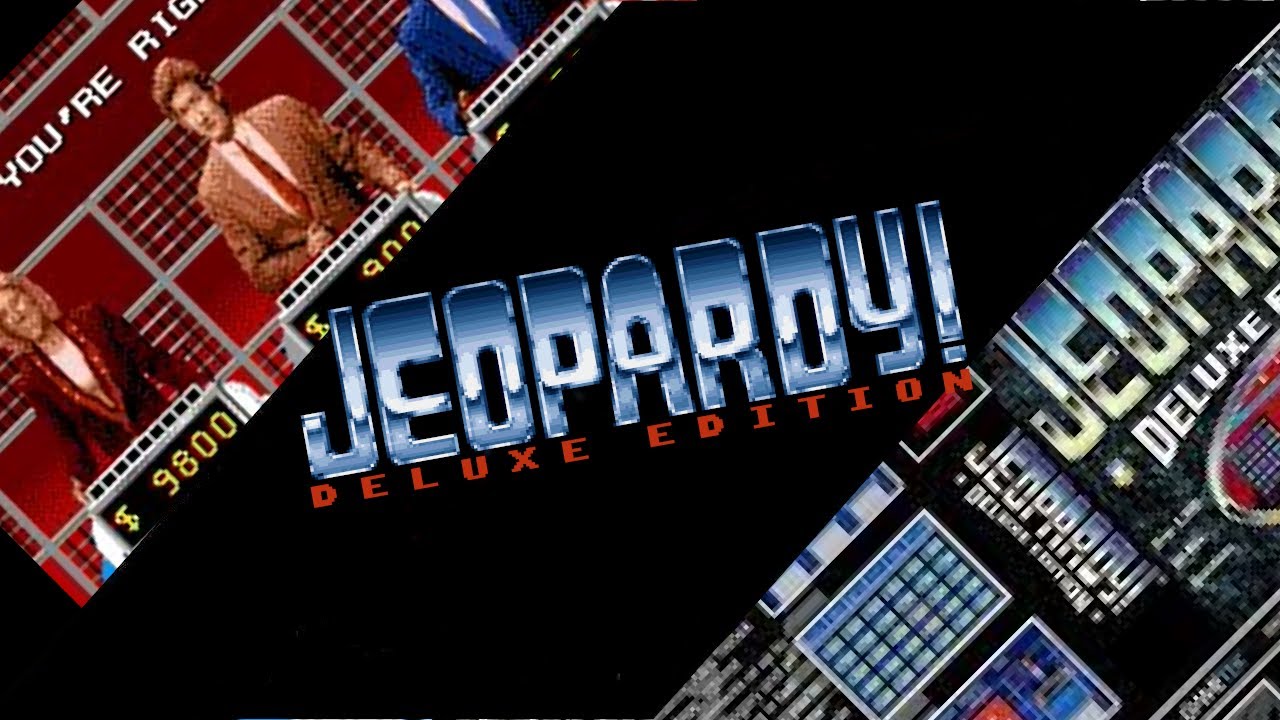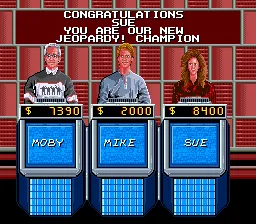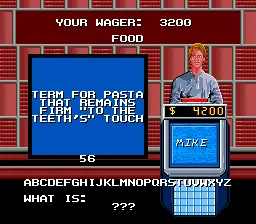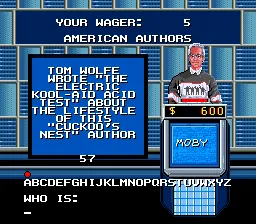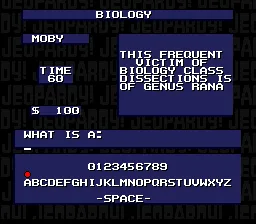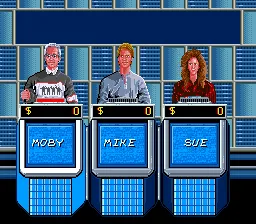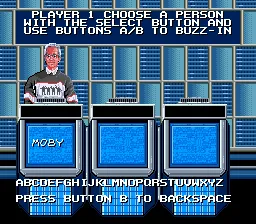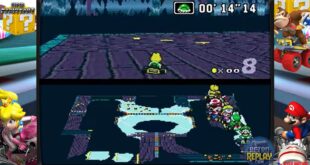(HEY YOU!! We hope you enjoy! We try not to run ads. So basically, this is a very expensive hobby running this site. Please consider joining us for updates, forums, and more. Network w/ us to make some cash or friends while retro gaming, and you can win some free retro games for posting. Okay, carry on 👍)
Hello Retro Gaming fans, Ryan Mcquinn here!
Growing up as 80’s and 90’s kids, my Wife and I watched a ton of Gameshows with our respecting parents. One big one in my Wife’s home was Jeopardy. Her and her parents would see who knew the most, and could answer the quickest. She says her Dad always won. I thought it would be a good idea to put her trivia knowledge to the test with a classic SNES game her and I both also played as kids. To be honest we both played, but she knew far more than me. My strong points were Egyptian Mythology and Airport designations, she covered everything else.
Retro Review: “Jeopardy!” for the Super Nintendo
“Jeopardy!” is not just a game; it’s a cultural institution. The Super Nintendo Entertainment System (SNES) adaptation of the storied quiz show is a digital homage to the cerebral challenge that has been a mainstay of American television since its inception. Released in 1992, “Jeopardy!” for the SNES aimed to encapsulate the essence of the show into a cartridge, allowing armchair intellectuals to test their mettle against the game’s AI, or in competition with friends. This retro review delves into the SNES title’s attempt to bring the thrill of answering in the form of a question to the gaming world.
Development and Production
Developed by GameTek, a company known for translating popular game shows into video game formats, “Jeopardy!” for the SNES presented itself as a faithful recreation of the show. GameTek’s mission was to stay true to the source material while adapting the game for an interactive experience. They had the challenge of not only designing the game but also compiling a vast database of trivia questions that would provide the depth and replayability “Jeopardy!” fans expected.
Audiovisual Harmony
The SNES version of “Jeopardy!” featured a MIDI rendition of the iconic think music that has become synonymous with the show, composed by Merv Griffin himself. The music and sound effects added a layer of authenticity, replicating the tension and excitement of the timer counting down as contestants scribble their final answers. While limited by the audio capabilities of the SNES, the tunes were instantly recognizable and evocative of the show’s atmosphere.
Graphically, the game matched the aesthetic of the early ’90s era of “Jeopardy!” with a faithful representation of the set. The blue game board, complete with its iconic grid of categories and values, was a comforting sight for fans. The graphics were clear and functional, with a touch of flair that made use of the SNES’s color palette.
Gameplay Mechanics
“Jeopardy!” for the SNES followed the structure of the television show closely. Players could choose from a selection of avatars to represent themselves and were able to input their names, adding a personal touch to the game. The gameplay was turn-based, with players selecting clues of varying dollar amounts from the game board, and responding in the form of a question.
Inputting answers was handled via an on-screen keyboard, which was a novel solution at the time but could be cumbersome. The game offered multiple difficulty settings, which adjusted the complexity of the questions and the proficiency of AI opponents.
Narrative and Experience
The game’s “story,” much like the show, is one of intellectual triumph. Each round players engage in a battle of wits, with the goal of amassing the most in-game currency by correctly answering a broad range of trivia questions. “Jeopardy!” on the SNES mirrored the show’s progression, from the Jeopardy round to Double Jeopardy, and culminating in Final Jeopardy, where players could wager their earnings on a single, high-stakes question.
Public and Critical Reception
Upon its release, “Jeopardy!” was met with a generally positive reception from fans of the show and gamers alike. It was praised for its faithful adaptation of the game show format and its broad range of questions. However, some criticized the input method for answers as being slow and sometimes frustrating, especially when racing against the clock.
Replay Value
“Jeopardy!” for the SNES boasted a high replay value due to its extensive library of trivia questions. Players could come back time and time again to face new challenges and categories, ensuring that the experience stayed fresh. The game also featured a password system, allowing players to continue their progress at a later time.
Four Interesting Facts
- Authentic Experience: The game includes an actual representation of Alex Trebek’s likeness, adding to the game’s authenticity.
- Vast Trivia Database: The SNES cartridge contained over 3,500 questions, a staggering number for a game of that era.
- Multiplayer Fun: Up to three players could compete against each other, making for a fun and competitive multiplayer experience.
- Variety of Categories: The game featured numerous categories, some of which were specifically created for the video game and not featured on the TV show.
Community Nostalgia
Reflecting on the game, a “Retro Replay” community member, Sarah Jennings, reminisces:
“The SNES ‘Jeopardy!’ was a staple in our family game nights back in the day. There was something special about buzzing in with that controller. We’d shout our answers at the screen, groan at the misses, and celebrate the wins. It wasn’t just a game; it was a bonding experience, one that I fondly remember whenever I hear that iconic theme music.”
Conclusion
“Jeopardy!” for the SNES remains a charming and challenging trip down memory lane. While it may not have the graphical fidelity or seamless interface of modern games, it represents a time when game show adaptations were a notable genre.
The verdict.
Graphics - 78%
Sound - 72%
Gameplay - 78%
Replay value - 100%
82%
The SNES 'Jeopardy!' was a staple in our family game nights back in the day. There was something special about buzzing in with that controller.
 Retro Replay Retro Replay gaming reviews, news, emulation, geek stuff and more!
Retro Replay Retro Replay gaming reviews, news, emulation, geek stuff and more!
